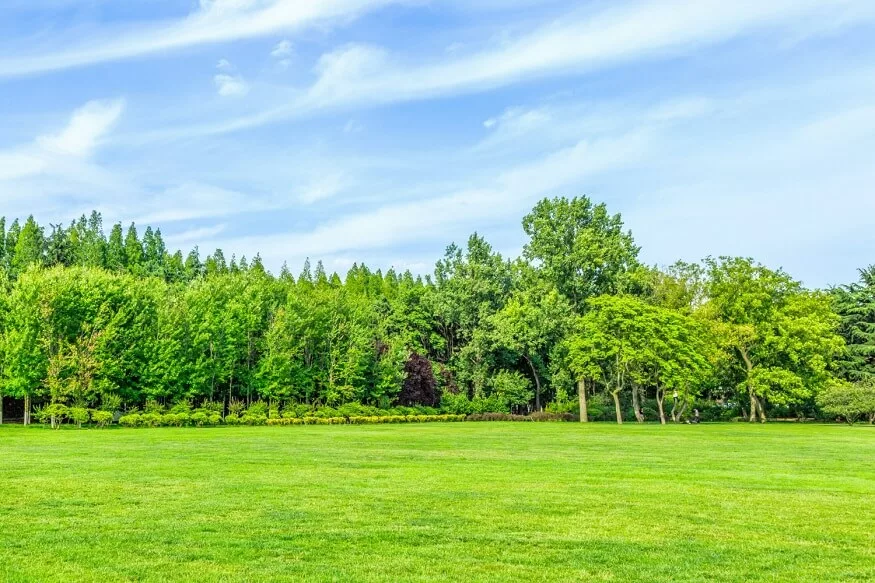Trees stand as silent sentinels, guardians of the environment, and pillars of life. With their towering presence and intricate ecosystems, trees play a crucial role in sustaining life on Earth. This blog aims to delve into the importance of trees and tips for children on how to conserve trees.
Importance of Trees
The importance of trees cannot be understated. Here are some of the key importance of trees:
- Air Purity and Oxygen Production: Trees are nature’s air purifiers. Through the process of photosynthesis, they absorb carbon dioxide and release oxygen, playing a vital role in maintaining the composition of the atmosphere. This oxygen, essential for human and animal life, is a direct result of the remarkable biochemical process occurring within the leaves of trees.
- Carbon Sequestration and Climate Regulation: Trees act as carbon sinks, absorbing and storing carbon dioxide from the atmosphere. This process helps mitigate the effects of climate change by reducing the concentration of greenhouse gases. Forests, in particular, play a crucial role in regulating global climate patterns by influencing temperature and precipitation.
- Biodiversity Support: The intricate ecosystems that trees create provide habitats for a diverse range of species. From birds and insects to mammals and fungi, trees foster biodiversity by offering food, shelter, and breeding grounds. The interconnectedness of these ecosystems contributes to the overall health and resilience of natural environments.
- Soil Conservation and Water Management: The root systems of trees help anchor soil, preventing erosion and promoting soil stability. Trees play a vital role in water management by influencing the water cycle. They absorb and release water through a process called transpiration, which regulates humidity and contributes to rainfall patterns.
- Urban Heat Island Mitigation: In urban areas, where concrete and asphalt dominate the landscape, trees provide much-needed shade and help mitigate the urban heat island effect. Their canopies reduce surface temperatures, creating a more comfortable and sustainable environment in cities.
- Improvement of Air Quality: Trees act as natural air filters, trapping pollutants and particulate matter from the air. The presence of trees in urban environments helps improve air quality by reducing the concentration of pollutants such as nitrogen dioxide, sulfur dioxide, and ozone.
- Economic Value: Beyond their environmental contributions, trees have significant economic value. The forestry industry provides timber, paper, and various wood-based products.
- Human Health and Well-being: Access to green spaces and the presence of trees have been linked to numerous health benefits. Spending time in natural settings has been shown to reduce stress, lower blood pressure, and improve overall mental well-being.
- Renewable Resources: Trees serve as a renewable resource for various purposes. Wood biomass can be used for heating, cooking, and electricity generation. Sustainable forestry practices ensure that the extraction of wood resources is balanced with the need for conservation, allowing for the continual renewal of this valuable resource.
- Cultural and Aesthetic Value: Trees hold cultural and aesthetic significance, enriching the human experience. The significance of trees is that they are prominently in art, literature, and religious symbolism. Planting and caring for trees contribute to a sense of community and environmental stewardship.
Also Read: Basic wilderness survival tips
Facts About Trees
Oxygen Production
Trees are essential contributors to the oxygen we breathe. Through the process of photosynthesis, trees absorb carbon dioxide and release oxygen, with one mature tree producing enough oxygen to sustain two human beings.
Ancient Wisdom
Some trees stand as ancient witnesses to history. The Great Basin bristlecone pine named Methuselah, for example, is over 4,800 years old, making it one of the oldest known living organisms on Earth.
Communication Superhighways
Trees communicate with each other through a network of mycorrhizal fungi in the soil. This intricate system, often referred to as the “wood wide web,” allows trees to exchange nutrients, warn of potential threats, and support one another.
Global Giants
Sequoias and redwoods, native to North America, are among the tallest trees on the planet. The Hyperion, a coast redwood, holds the record as the tallest known living tree, reaching a height of 379.7 feet (115.7 meters).
Diverse Ecosystems
Trees support an incredible array of life within their branches, trunks, and roots. From insects and birds to mammals, fungi, and microorganisms, the biodiversity hosted by trees forms intricate and interconnected ecosystems.
Also Read: 8 Reasons Why Exploring Nature with Children is Important
How To Conserve trees – Tips for children
Here are some child-friendly tips to instill a love for trees and foster a sense of responsibility towards their conservation:
- Tree Planting Adventures: Organise tree-planting adventures as a family or with schoolmates. This hands-on activity not only helps the environment but also creates a sense of ownership and responsibility for the trees they plant.
- Nature Walks and Tree Identification: Take children on nature walks and teach them how to identify different tree species. Learning about the unique characteristics of each tree fosters a connection to nature and an appreciation for its diversity.
- Create a Tree Diary: Encourage children to keep a tree diary. They can draw pictures, take photos, or write about their favorite trees in the neighborhood. This diary can serve as a personal connection to the trees they encounter.
- Watering and Caring for Trees: Teach children the importance of caring for trees by watering them during dry spells. This simple activity helps instill a sense of responsibility and nurturing towards the environment.
- Recycling and Paper Conservation: Explain to children the connection between paper and trees. Encourage them to recycle paper and use both sides of a sheet when drawing or writing. This helps them understand the impact of their actions on tree conservation.
- Tree-themed Arts and Crafts: Incorporate tree-themed arts and crafts into playtime or school activities. Creating tree-related art projects can be both fun and educational, reinforcing the importance of trees in a creative way.
- Storytelling and Books: Read books and tell stories that highlight the importance of trees and nature. Engaging stories can capture a child’s imagination and leave a lasting impression about the beauty and significance of trees.
- Bird Watching and Wildlife Appreciation: Explore the connection between trees and wildlife by engaging in bird watching. Teach children how trees provide shelter and food for various animals, fostering an understanding of the intricate web of life in ecosystems.
- Be a “Tree Detective”: Turn tree conservation into an exciting adventure by being a “tree detective.” Encourage children to observe trees closely, noting any signs of health issues or pests. This activity helps them understand the role they can play in preserving tree health.
Also Read: World Nature Conservation Day: History, Significance and Threats
EuroSchool fosters tree conservation through planting, education, and sustainable practices.










